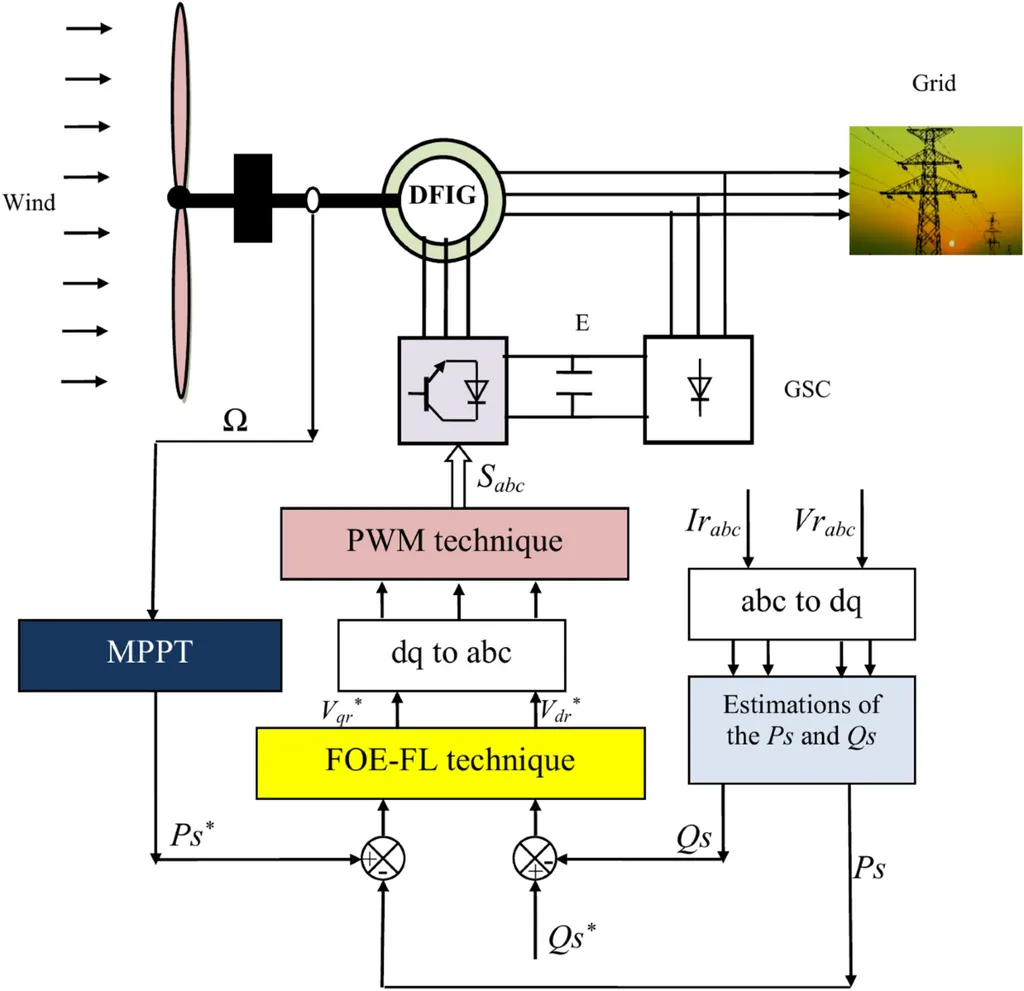In a significant stride towards enhancing the efficiency and reliability of wind energy systems, researchers have developed a novel predictive control strategy that promises to revolutionize power generation from wind turbines. The study, led by Mahmoud A. Mossa from the Electrical Engineering Department at Minia University in Egypt, was recently published in the journal “Results in Applied Engineering.”
The research focuses on optimizing the performance of a wind energy conversion system (WECS) using a five-phase permanent magnet synchronous generator (PMSG). The proposed predictive voltage control (PVC) algorithm has demonstrated remarkable improvements in dynamic response and power quality, setting it apart from traditional control methods like predictive torque control (PTC) and predictive current control (PCC).
One of the standout achievements of this research is the substantial reduction in total harmonic distortion (THD). The PVC algorithm achieved a 60% reduction in THD compared to PTC and a 28% reduction compared to PCC. This translates to smoother and more stable electrical power output, which is crucial for both grid-connected and standalone applications.
“Our goal was to enhance the quality of generated power from wind turbine systems,” said Mossa. “The PVC algorithm not only minimizes voltage oscillations and current harmonics but also ensures robust power flow management, making it a highly efficient and reliable control strategy.”
The study also highlights the computational efficiency of the PVC algorithm, which recorded a 28.3% reduction in computation burden compared to PTC and a 23% reduction compared to PCC. This efficiency is vital for real-time applications, where quick and accurate decision-making is essential.
The research thoroughly investigates the performance of the WECS under two modes of operation: grid connection and standalone, integrated with a battery bank and a bi-directional converter. The simulations demonstrated the controller’s ability to regulate electrical power seamlessly between the generator, load, and battery, ensuring balanced charging and discharging operations.
The implications of this research are far-reaching for the energy sector. As the world increasingly turns to renewable energy sources to address environmental challenges, the need for efficient and reliable control strategies becomes paramount. The PVC algorithm’s superior performance in minimizing system dependability and ensuring robust power flow management could significantly advance the practical implementation of wind energy systems.
“This research provides a strong foundation for implementing this control strategy in real-world applications,” Mossa added. “It paves the way for enhancing the performance and dependability of renewable energy systems, contributing to a more sustainable energy future.”
As the energy sector continues to evolve, the findings of this study could shape future developments in wind energy conversion systems, making them more efficient, reliable, and adaptable to various operational scenarios. The research not only underscores the importance of innovative control strategies but also highlights the potential for significant improvements in power quality and system performance.

